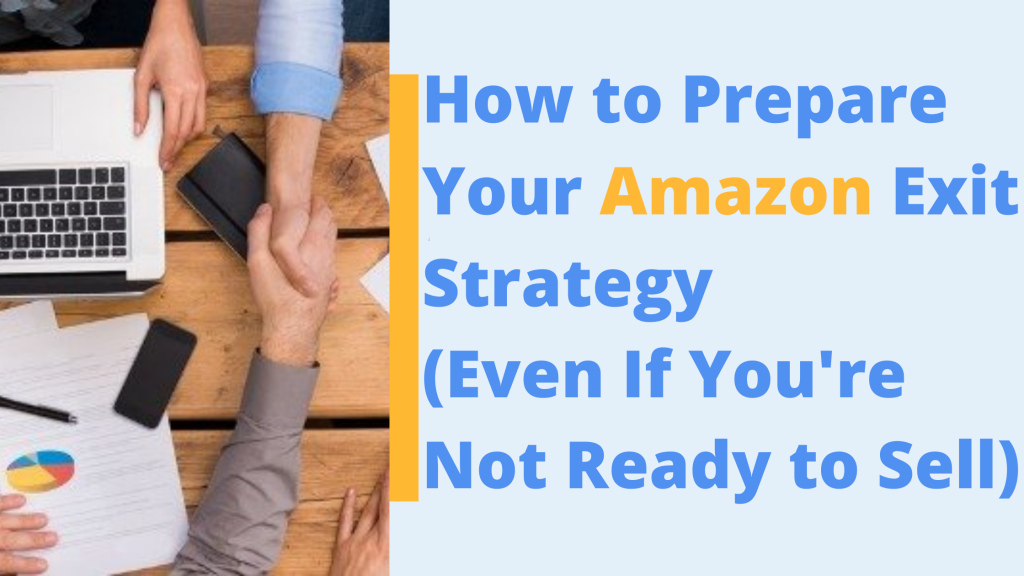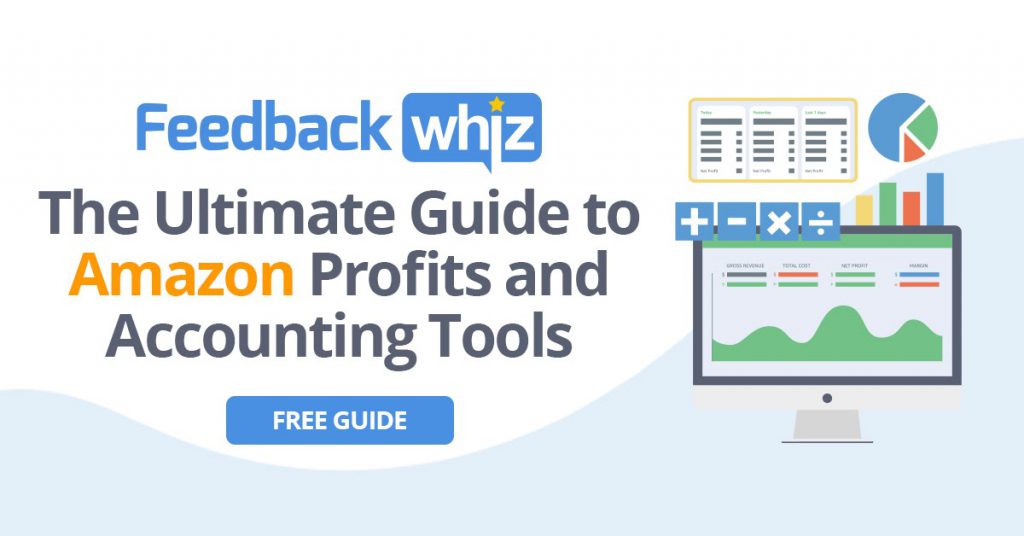
Some entrepreneurs start their Amazon businesses with a long-term plan on how they hope to eventually sell their business already in mind. Many Amazon sellers start their journey without having given their eventual Amazon exit strategy any thought, and it is only after they’ve enjoyed success on the platform and built up a successful business that they start thinking about what’s next.
Regardless of what your mindset was before you built up a strong brand and profitable business, the process of executing an Amazon exit strategy can be an overwhelming one.
When’s the right time to sell your Amazon business? How much should you sell it for? What do you need to do to prepare this exit strategy? Fortunately, there are plenty of former Amazon business owners and acquirers out there that have laid the groundwork for future Amazon sellers.
Strap in, because we’ve got a lot of info to dive into. Here’s a look at how you can prepare your Amazon exit strategy.
How to Prepare Your Amazon and eCom Exit Strategy
The first piece of advice we can give you is straight from FBA acquirers.
5 Steps to Prep Your Amazon Exit, According to Acquirers
1) Understand the true value of your business
Revenue and total sales are useful metrics in evaluating your business. But those numbers alone don’t tell the full story of how profitable your business is. Our friends at FBA Broker DragonFlip broke down how to value your Amazon business. In short, in comes down to Seller Discretionary Earnings vs. Earnings Before Interest, Taxes, Depreciation and Amortization.
A company with $1 million in sales per year that spends $900,000 on expenses is less profitable than a company with $800,000 in sales that spends only $200,000 on expenses. This is why companies use Seller Discretionary Earnings (SDE) or Earnings Before Interest, Taxes, Depreciation and Amortization (EBITDA) to measure performance.
SDE is generally used for companies that make $1 million or less, solving for how much the owner will take home by subtracting Cost of Goods Sold and Operating Expenses from Revenue and adding the Owner’s Salary. EBITDA is used for business that make over $1 million and is equated by adding Net Income + Interest Expense + Deprecation Expense + Amortization Expense + Taxes.
Amazon seller valuations generally range from four to six times SDE as of early 2022.
2) Consider the pros and cons of the age of your business
The age of your business will be an important factor that acquirers consider when making an offer to buy your Amazon business. Some acquirers prefer businesses that are still in their early stages so that they can take advantage of the growth to come, while others prefer a more seasoned and established business that has proven it can generate profits over the long run.
Depending on what type of products you sell and the type of success you are having (sustained vs. volatile), expect different offers and assessments on your business’s value.
Related: 6 Inventory Management Tips for Profitability.
3) Diversify your revenue sources
Most Amazon businesses have a star product or two that drive a large portion of profit and sales. These are great assets to have, but they can also be a long-term liability in a digital world filled with ever-changing competition and consumer preferences.
The more diversified your product line is, the easier your business will be to sell as potential buyers will feel safer knowing that their long-term profits will be secure even if the popularity on a big seller starts to fade.
There’s a lesson here. Be everywhere. https://t.co/jFfF1NdcnK
— Jon Elder | Black Label Advisor (@BlackLabelAdvsr) February 16, 2022
4) Establish that your business can succeed without you
Everyone respects a high-energy entrepreneur that can do it all. These types of business owners are great for running a successful Amazon business, but they aren’t great for exit strategies. After all, once you sell the business, you won’t be around to run it anymore. The more essential you are to an Amazon business’s success, the less appealing your business will be to a potential buyer as finding a replacement for you could be challenging or even impossible.
Acquirers are looking for businesses that have been built to the point that you no longer need to be so hands-on. If you have a reliable team, brand and operations process in place, this could easily be transferred to another owner or Amazon aggregator brand manager while maintaining its current success.
5) Be trending in the right direction
Amazon Acquirers are generally targeting one of two types of businesses. One that has established success that should continue to maintain that established success as passive income for the acquirer for years to come, and those that have major growth potential. Businesses with growth potential include those currently trending upwards in sales and those that an acquirer can accelerate by investing more money and resources.
What acquirers aren’t looking for are businesses that have plateaued and are now trending downward. Sure, there are some acquirers that might be interested in this type of business at a discount in the hopes of rebuilding it, but most acquirers aren’t looking to put in that type of work and money. If you have an Amazon business that is trending in the wrong direction, putting the time in to solve and fix the problem will drastically boost the value of your business.
Related: 6 Easy Ways to Identify Product Trends on Amazon.
Research Amazon Business Acquirers
Think you’re ready to sell your Amazon business? There are a few options when you want to sell, but we highly recommend the following two ways when you’re ready to sell:
- Contact FBA acquirers directly; or
- Reach out to an Amazon broker.
There is plenty of money to be had – over $3 billion has been raised in the aggregator space, with $1.2 trillion in dry powder across all private equity and corporate balance sheets.
Amazon Aggregators and FBA Acquirers
There are over 80 active Amazon aggregators currently on the market. If you are running a successful brand on Amazon, you may have already had one or more of these acquirers reach out to you.
Choosing the right aggregator can be a time-consuming process, but fortunately there is plenty of information available online about these companies. Before making any final decisions, be sure to do your research to see if there are any other acquirers that might be a better fit for your business or that might be willing to make you a better offer.
Amazon Brokers
If you’ve never sold a business before and feel overwhelmed by the process of researching and choosing an aggregator, it may be worth the investment to hire an Amazon business broker. Brokers are third-party companies that assist Amazon sellers in selling their business to acquirers, generally charging a fee of around 5-15% of the final sale for these services.
That fee may seem steep, but not having to go through this process alone and having experienced negotiators in your corner is invaluable. Before choosing a broker, be sure to do your research here too, making sure to choose a credible broker with a proven track record and sound strategy.
Scale Your Amazon Business Before You Sell
While a number of factors will go into determining the value and eventual selling price of your Amazon business, you can expect the price to be somewhere in the neighborhood of four to six times your SDE. As a result, the higher you can build up your SDE, the more lucrative your Amazon exit will be.
Whether you are months or years away from putting together your Amazon exit strategy, you’re probably going to want to start learning about all the Amazon automation tools at your disposal. There are various software programs that do all, or some combination of, the following:
- Optimize your product listings. This includes keyword search and test to get your products ranked higher than competitive listings.
- PPC management. These software tools manage PPC as bids to help ensure ads get the most visibility for the best price.
- Brand protection. Product monitoring tools protect your listings from hijackers, buy box loss, price changes, listing changes, and more.
- Bookkeeping. Unless you really like staring at a spreadsheet, and even if you do, accounting software is a given for any well-run business.
- Feedback and product review management. The right automated review tool helps Amazon sellers quickly manage the review process, and build unique seller feedback campaigns.
- Inventory Management. While Amazon FBA does maintain and manage your inventory, you still need to stay on top of when stock levels are low and when you need to reorder. Inventory management software saves you the trouble of continually looking at your Amazon reports.
- Profit and loss. Calculating net profit can be a difficult and messy process without the right tools.
- Automated email campaigns. It’s not just creating the emails, it’s making sure the emails go to the target audience and tracking which emails are more effective than others.
The time you save and the resources you free up with Amazon automation results in lower operating costs and better customer experiences. You can reinvest your time into marketing your business and scaling it for future growth and, if you share the end-game of many Amazon sellers, making it highly attractive to potential buyers.
FeedbackWhiz provides advanced Amazon seller software automation tools to boost the performance of your Amazon business. This includes tools to automate email campaigns, improve seller feedback, get more product reviews, monitor product listings and analyze seller profits and accounting data.
It’s the ultimate all-in-one Amazon automation tool to achieve higher sales, better feedback and reviews, with sophisticated data analytics, in a single platform with a single login. Interested in learning more about the FeedbackWhiz suite of Amazon seller management software products. Sign up for a free 30-day trial.





0 Comments